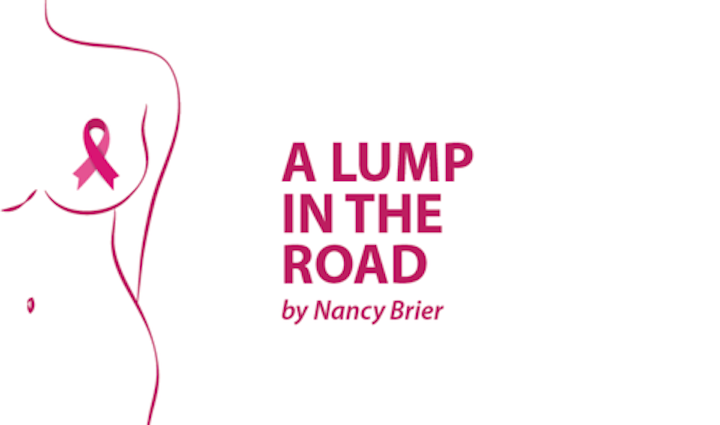This post was originally published on this site
The bad news? It was cancer. The good news? It was in the early stages, a baby tumor at 1.5 cm. It’s hard to believe something so small has such a big impact.
My friend Lauren went to a routine mammogram and was surprised when she heard from her doctor a few days later. “When it’s the doctor calling, you know something’s wrong,” she told me. That’s when she learned she had cancerous cells in her left breast and pre-cancerous cells in her right.
We’d just met, but I had a strong feeling that self-advocacy comes naturally to Lauren. Dressed in white with stylish, cropped hair, she looks like the picture of self-confidence – someone smart enough to figure out what she wants and brave enough to go after it.
The first thing she did was consult her naturopathic doctor, who utilizes a variety of alternative medicines to optimize patients’ health, including natural remedies and self-healing processes. Together, they decided to alter Lauren’s diet: no caffeine, no alcohol, no animal protein, no grains, and no sugar. No fun, I thought, wondering if the splash of apple juice in my organic sparkling ginger spritzer would have been a deal breaker.
Over the next little while, though, Lauren’s tumor shrunk from 1.5 cm to 1 cm. Maybe it was the diet.
Lauren plunged into research, tapping into every resource she could think of and investigating every option with passion. The standard of care called for a lumpectomy on the left breast followed by radiation. For the next five years, she would have hormone therapy and regular imaging every six months. The other alternative was a double mastectomy.
“I was leaning toward the double mastectomy,” Lauren said, “because I hated the idea of ‘worried waiting.’” I knew what she was talking about because I’ve been having mammograms twice a year for a long time. I always wonder if they’re going to tell me my cancer is back. “Worried waiting” is a perfect description.
“The problem with the mastectomy is that they can’t save your nipples,” Lauren said. “That was the part that bothered me.” Although it sounds like a minor issue, it isn’t. You can get a 3-D tattoo that looks a lot like a nipple, but losing any body part is an irreparable loss. I remember how relieved I was when I learned that my own nipple would be spared during my nipple-sparing lumpectomy.
“I was mulling over these decisions when I bumped into a friend,” Lauren said, “and she told me about cryoablation. It’s a [cryotherapy] procedure where they freeze tumors using liquid nitrogen.”
I visualized one of those trendy ice cream shops where you can order any flavor you want and the guy behind the counter disappears into a cloud before handing you a cone. But it’s not like that. The way it works is actually rather ingenious. In cryoablation, a needle-sized guided probe delivers nitrogen to the tumor, freezing it and killing the cancerous cells. Ten minutes later, they inject the tumor with nitrogen again — giving it a double whammy! The whole procedure takes less than an hour and recovery time is short, only a couple of days, with no serious side effects. Even the risk of scarring is minimal, and studies suggest that cryoablation might aid the body’s natural immune system in fighting cancer.
I asked Lauren if it was painful, or if it felt weird to watch the procedure being performed while she was awake. “Part of it was uncomfortable,” she told me, “but I wouldn’t say it was painful.” She went on to explain that the first step in the process is to deliver a local anesthetic. They then pump the area with saline to protect the skin from being frozen. “I watched my breast blow up like a balloon,” she said, “and I could feel my skin stretching from the inside out. It was surreal.”
Although many cryoablation patients follow the procedure up with radiation, Lauren opted not to. Instead, she manages her diet with a passion, takes immune-boosting supplements, and plans to see her doctor on a regular basis.
Fortunately, cryoablation is in clinical trial and currently showing impressive results. To find out if you’re a candidate, check the criteria below:
- Age 50 or older
- Invasive ductal carcinoma diagnosed by a core needle biopsy
- Maximum tumor size 2 cm or smaller based on mammogram, ultrasound, and MRI
- Clinically node-negative, hormone receptor-positive, and HER2-negative
- Less than 25 percent intraductal component in the aggregate
- Lesion must be visible by ultrasound
- Adequate breast size with .5-cm margins between the ablated lesion and the skin
In the battle against cancer, there has been tremendous progress, but the standard of care — chemo, surgery, and radiation — remains the cornerstone of treatment. Cryotherapy hints at a far less painful, less invasive, and less expensive alternative, and pioneers like Lauren are helping to make that alternative viable reality.
***
Note: Breast Cancer News is strictly a news and information website about the disease. It does not provide medical advice, diagnosis, or treatment. This content is not intended to be a substitute for professional medical advice, diagnosis, or treatment. Always seek the advice of your physician or other qualified health provider with any questions you may have regarding a medical condition. Never disregard professional medical advice or delay in seeking it because of something you have read on this website. The opinions expressed in this column are not those of Breast Cancer News, or its parent company, BioNews Services, and are intended to spark discussion about issues pertaining to breast cancer.
The post Breast Cancer? Put It on Ice appeared first on Breast Cancer News.
The post Breast Cancer? Put It on Ice appeared first on BioNewsFeeds.


